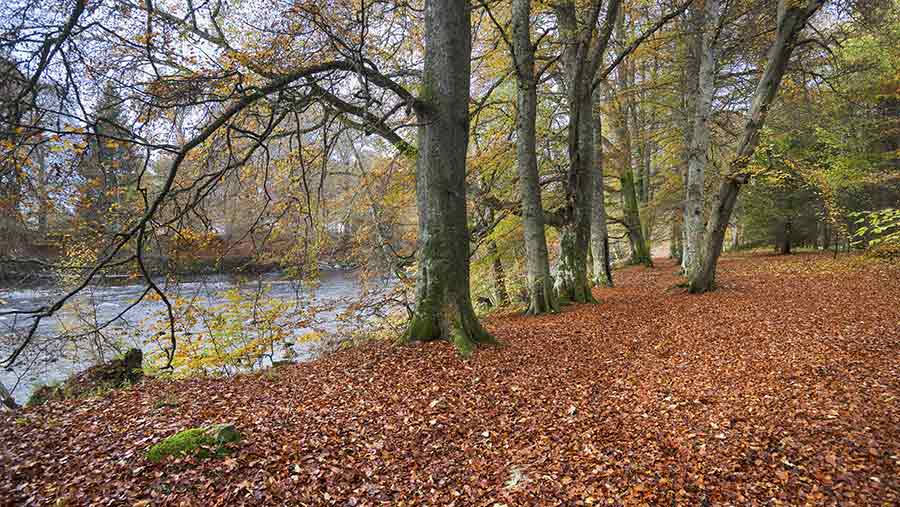Tree planting ‘can reduce flooding by 20%’
 © Dennis Barnes / Scottish Viewpoint/REX/Shutterstock
© Dennis Barnes / Scottish Viewpoint/REX/Shutterstock Planting trees around rivers can reduce flooding downstream in towns by up to 20%, a study has found.
Tree planting in the uplands to slow the flow of water from the hills is one idea put forward in recent weeks as a possible solution to damaging flooding, such as the winter floods that devastated Cumbria and other parts of northern England in December.
The research for the Environment Agency found that planting trees along flood plains creates “logjams” that help prevent flooding further downstream.
See also: How tree planting provided big benefits for one dairy farmer
Scientists at the universities of Birmingham and Southampton studied a catchment in the New Forest over a 100sq km area, upstream of the town of Brockenhurst.
They wanted to understand how tree planting, river restoration and logjams might affect the “peak height” of a flood in a downstream urban location.
Using a digital simulation, the researchers found planting trees on the floodplain and increasing the number of logjams across 10-15% of the total river length could reduce the peak height of a potential flood in the town by 6% – once the trees had grown for 25 years.
Meanwhile, more extensive floodplain forest and river restoration – for example in 20–25% of the total river length – resulted in a reduction in flood peak height of up to 20%.
See also: 9 reasons to plant trees on your land
Tree planting ‘good alternative’ to flood defences
As the trees age and the forests become more mature and complex, up to 100 years after planting, there are larger reductions in flood peak height. The study authors said the research was a reminder that natural processes, such as tree planting, could reduce downstream flood risk and were important alternatives to conventional hard flood defences.
Lead author Simon Dixon, from the University of Birmingham’s Institute of Forest Research, said logjams contributed to slowing the flow by backing up water and pushing it onto the floodplain.
In locations where the floodplains were meadows or crops, the water may still be able to flow over the surface quickly. Therefore, to make the best contribution to flood mitigation, it is important they are used in locations with complex bankside vegetation to slow water flowing over the floodplain.
Dr Dixon said: “We believe tree planting can make a big contribution to reducing flood risk, and should be part of a wider flood risk-management approach, including conventional flood defences.
“Tree planting would represent an extra element that helps to slow down the arrival of rainwater to vulnerable locations.”
The Country, Land and Business Association (CLA), whose membership represents more than 10m acres of rural land in England and Wales, said the report highlighted the critical role tree planting could have in preventing flooding.
Farmers have important role on flood alleviation
CLA president Ross Murray said: “The CLA has been actively calling for the type of whole-river catchment, long-term approach that this report advocates.
“Planting new trees has a significant role to play in tackling flooding. Depending on the catchment this could be appropriate for a floodplain or on uplands.
“Farmers and other land managers are essential to making this happen and they want to be a part of the solution. It is important now that focus turns to practical delivery, with the right support put in place to allow land managers to change how they use land in order to provide this service.”
However, Ben Lukey, flood risk manager at the Environment Agency, said although natural flood defences improved water quality, they were not suitable everywhere.
He added: “The Environment Agency is already working with partners to use natural flood management measures, such as tree planting, in our flood defence work and have found they can make an effective contribution when used alongside other, more traditional, flood defences.”
